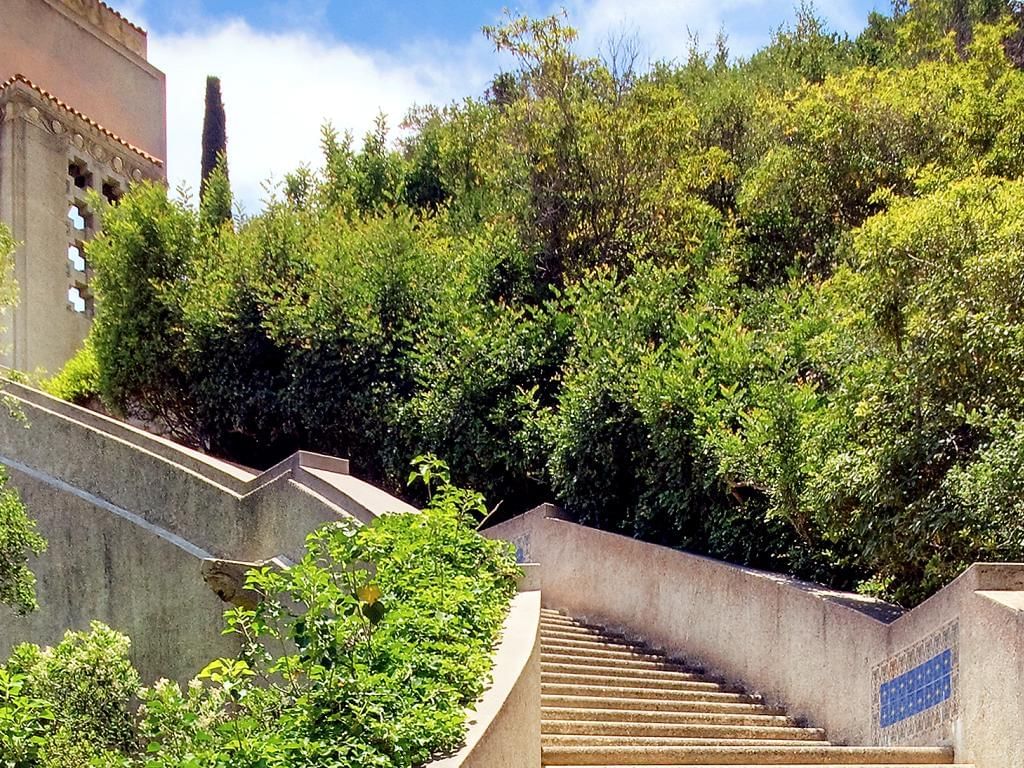Wrigley Memorial & Botanical Gardens
A FITTING TRIBUTE TO WRIGLEY AND HIS VISION FOR CATALINA
The Wrigley Memorial & Botanical Garden is operated by the Catalina Island Conservancy. It's a 30-minute walk up Avalon Canyon from downtown Avalon. You can also take COAST, Avalon's Public Transportation System, a taxi, ride a bike or rent a golf cart.
THE WRIGLEY MEMORIAL
Quarried Catalina stones can be seen in the reinforced concrete construction of the monument -- the facade having been sandblasted to hide the cement and highlight the native crushed stones. The blue flagstone rock on the ramps and terraces comes from Little Harbor, on Catalina's windward side. The red roof tiles and all the colorful handmade glazed tiles used for finishing came from the Catalina Pottery plant, which was in operation from 1927 to 1937. The marble inside the tower was quarried in Georgia.
THE BOTANICAL GARDENS
The idea for the gardens came from Mr. Wrigley's wife, Ada. In 1935, she supervised Pasadena horticulturalist Albert Conrad, who planted the original Desert Plant Collection. Catalina Island's temperate marine climate made it possible to showcase plants from every corner of the earth.
In 1969, the Wrigley Memorial Garden Foundation expanded and revitalized the garden's 37.85 acres. Along with the new plants came a new attitude. In the same way that the Wrigley Memorial uses primarily native building materials, the Gardens place a special emphasis on California island endemic plants. (Plants, which grow naturally on one or more of the Channel Islands, but nowhere else in the world.) Many of these plants are extremely rare, and some are on the Endangered Species list.
The Memorial Garden is particularly concerned with the six Catalina endemics - plants, which grow naturally only on Catalina Island. The Wrigley Memorial Garden Foundation maintains a special interest in the preservation of all Catalina endemics, including the rare Catalina Ironwood.


